Finding a van with the right amount of interior and exterior storage can feel like a modern-day retelling of Goldilocks – some have too little, others too much, and some are just right. But once you’ve found the perfect van to storage ratio, packing it safely and effectively is another matter entirely.
Learning how to use your storage space can be a double-edged sword – because the more space you save with effective packing, the more tempted you can be to overpack.
So, before you begin loading all your gear on board, let’s get our heads around the all-important issue of weight distribution and how to pack your van. Understanding your towing capacity plays a large role in weight distribution, and more information can be found on RVSafe’s website or TradeRVs.
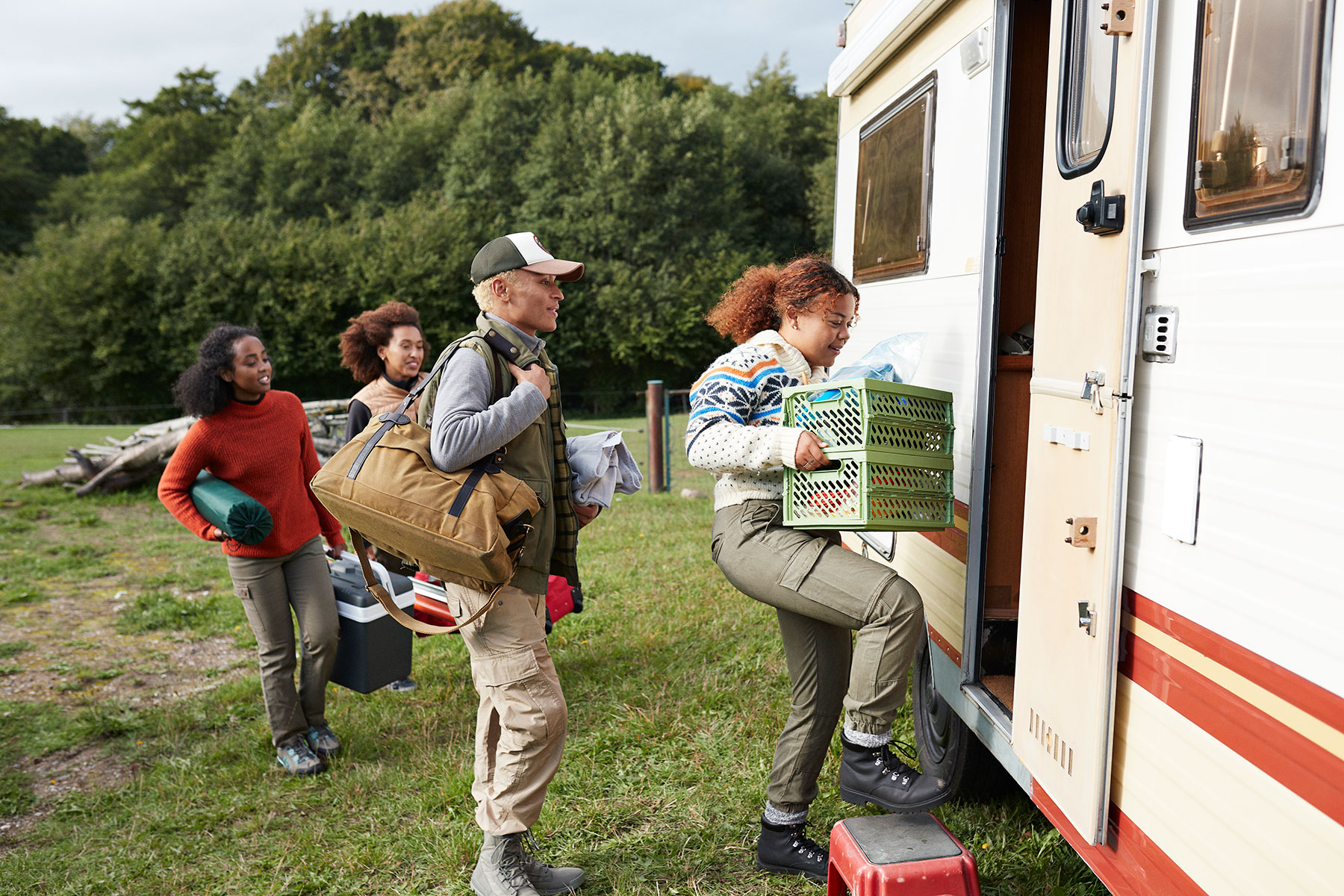


WEIGHT DISTRIBUTION
Once you have your head around the legal weight your tow vehicle and van can carry, the logic around packing your van to maintain a safe weight distribution is fairly simple. Weight distribution refers to how the total mass of the van is distributed across its axles and tyres. If done correctly, the weight should be distributed evenly from left to right and front to back. Packing incorrectly can have a range of issues depending on where the load is unevenly placed.
If more weight is placed towards the front of your van, more pressure you put on your tow vehicle’s ball weight and suspension, and it can start to lift the tow vehicle’s front wheels. Alternatively, too much weight at the rear of your van can have the opposite see-saw effect and lift the rear of your tow vehicle, causing low traction, braking issues and difficulty managing movement. Too much weight on either side of your van will affect your handing experience.
One of the most common effects of incorrect weight distribution is swaying or snaking, when the uneven weight in the van causes the van to swing from side to side with the hitch acting as the pivot point. This can be very dangerous to both you and others on the road. Many caravans have sway control, but it is always best to pack correctly and avoid it to begin with than be complacent and risk the system failing.
It’s for this reason that it’s best to keep your heavy items in a central location so that the weight is carried on the axles or spread throughout the van to create balance. Storing the heavy items as low down as possible will also aid in keeping the van stable and avoids the chance of items falling and causing damage to the van or injury.
And as mentioned, it is important to ensure you do not overload your van, as this can have legal and safety consequences.
STORAGE SOLUTIONS
Now that you’ve got your van weight and distribution under control, organising your storage is the next matter to consider.
When packing, consider if items are absolutely necessary or luxuries that won’t ever be used.
Packing cubes are ideal for keeping your clothes storage under control – both in terms of organisation and quantity. With these you can sort your clothes into categories for easy access, whether it’s keeping your shirts and shorts separated or having an identifiable cube for each child. Most chain stores such as Ikea, Kmart and Target sell variants of these in different sizes, colours and formats – lids versus open, with dividers or without. And many of these options are made from materials with enough flex to squeeze into different sized compartments. For a more long-term option, Oztent has its own range of storage pods with clear PVC lids for easy identification, handles, and labels.
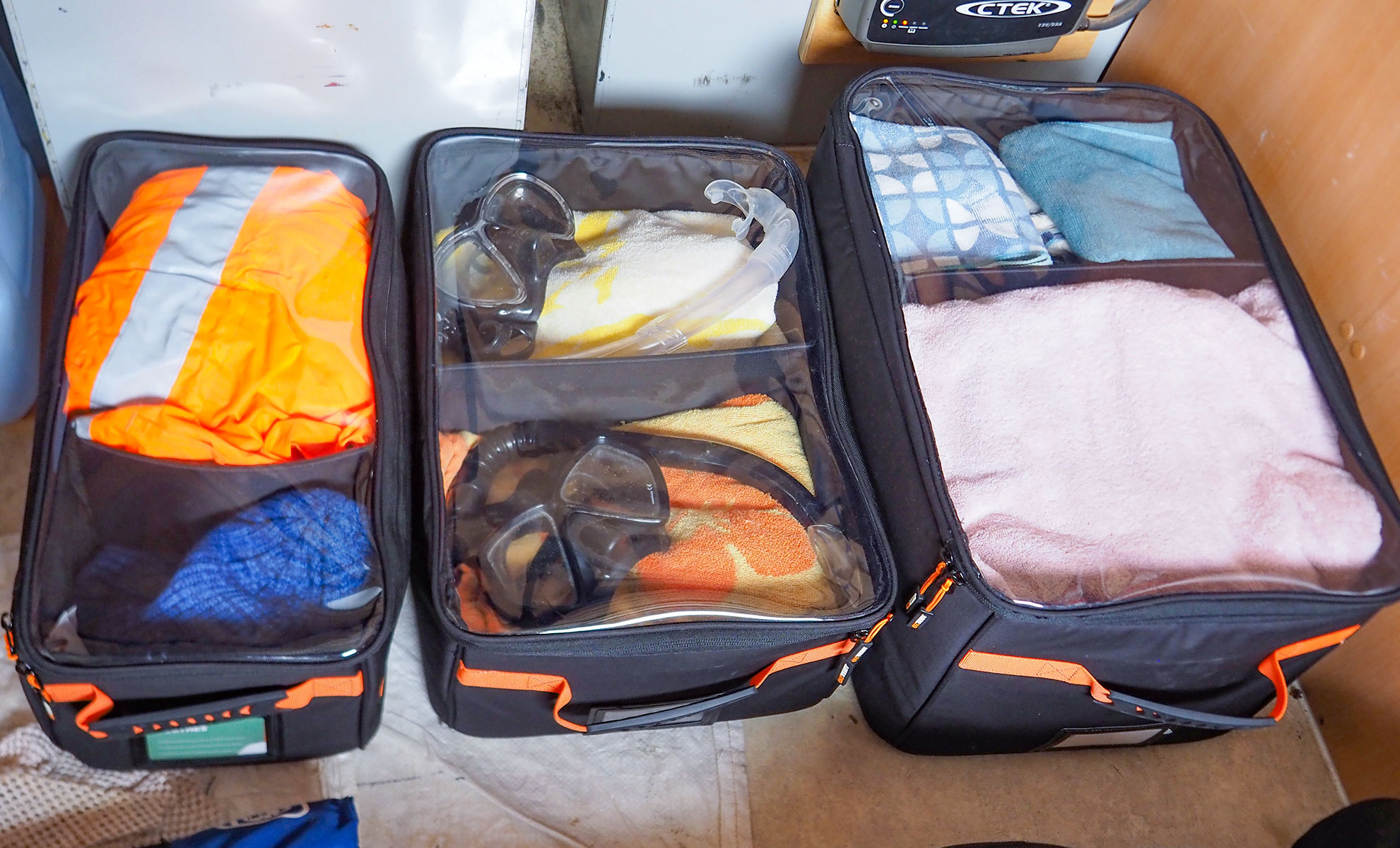
Collapsible items are great space-saving solutions, whether it’s your favourite collapsible travel keep-cup that can pack easily away when not in use, or collapsible silicon food containers.
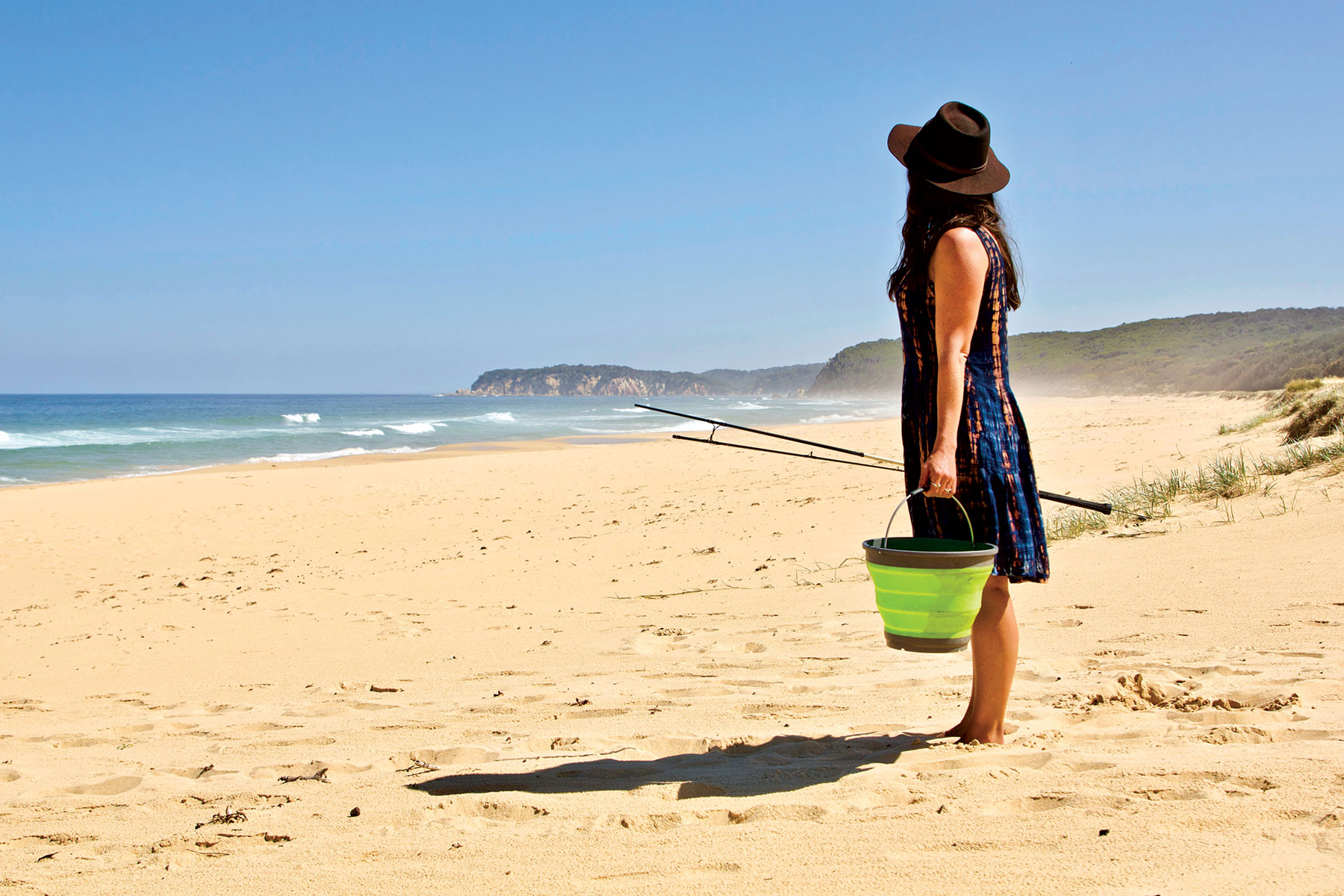
Overhead cabinets in the van are the domain of all things lightweight. Think your lighter food stuffs, such as chips, biscuits, pasta, bread, as well as eating and drinking utensils. Ikea Kmart, Target and Aldi are all great options for finding plastic or melamine cups, plates and dishes that won’t take up too much space – or better yet, too much weight. And remember to keep an eye out for options that stack securely. But if you prefer to eat off traditional crockery, make sure you only bring what you need. While it might be nice to have a set of six at home, it’s unnecessary weight and baggage when travelling. The Corelle brand is a popular option for lightweight and durable dinnerware, and can be bought directly from the brand’s website or at Big W.
If you’re not a fan of drinking hot drinks from plastic and want your favourite mug to join you on the road, non-slip mats are your friend. Use these to line the shelf and store the cups upside down so that they don’t move around when travelling. Or another trick is storing your glass wear in stubby holders to stop them from hitting each other and breaking while you’re on the road.
To make even better use of your cupboard space, consider adding a freestanding shelf to maximise the height of the cupboard or plastic basket to keep the items contained when travelling. There are plenty of options out there in all shapes and sizes to suit your van’s storage. And remember to consider practical elements like clear sides for visibility and handles for easy access. Label stickers also go a long way at ensuring you and whoever you’re travelling with can find things at a glance rather than disrupting all your careful packing.
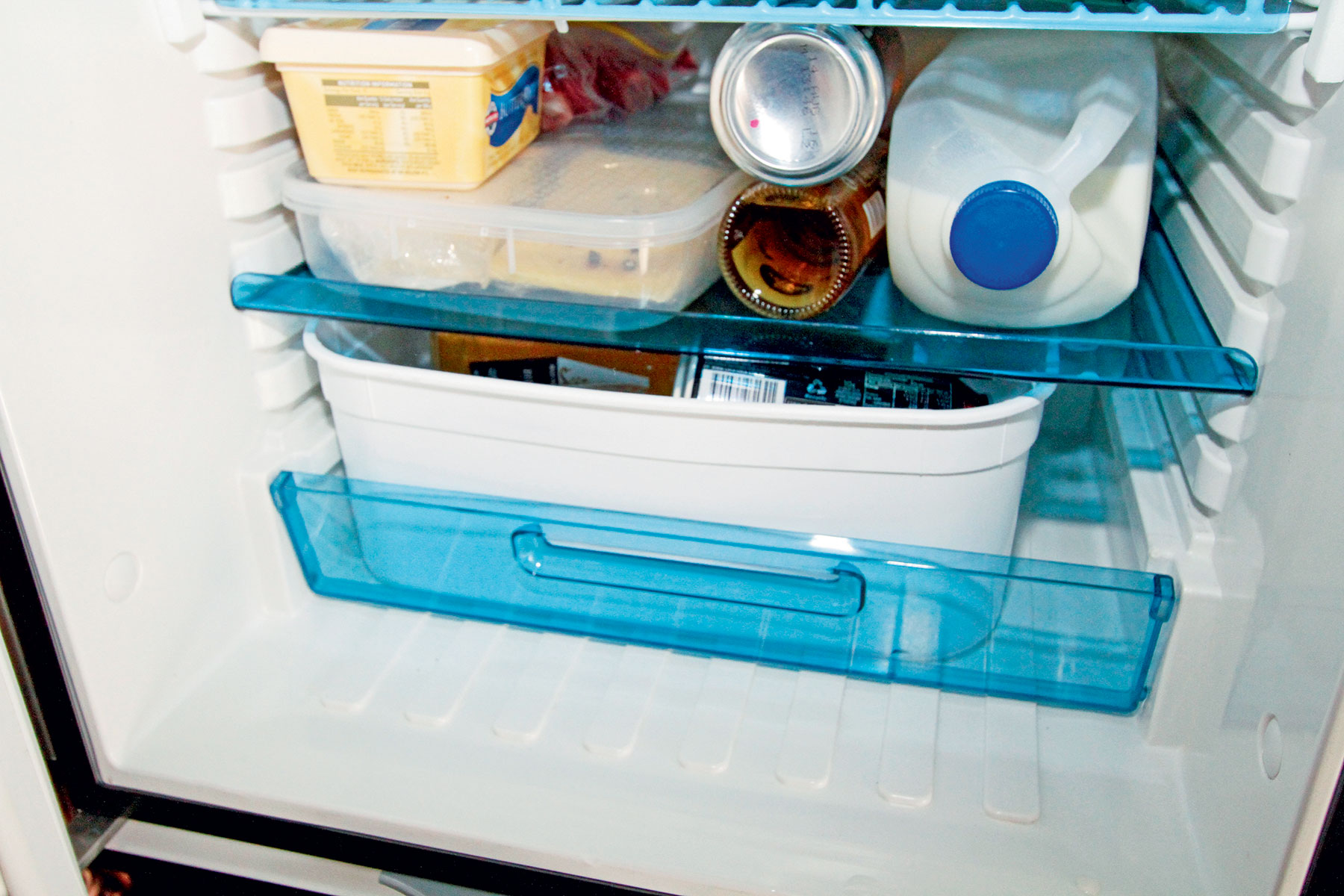
BULKY ITEMS
As mentioned, all your bigger and heavier items should be kept low – not only to avoid them falling and hurting someone (you or the van) but also to keep the van’s centre of gravity low.
Store your jars, cans, potatoes and other heavy things such as pots and pans in the lower cabinets. Once more, stores like Kmart and Ikea can prove very helpful in finding simple plastic organisers.
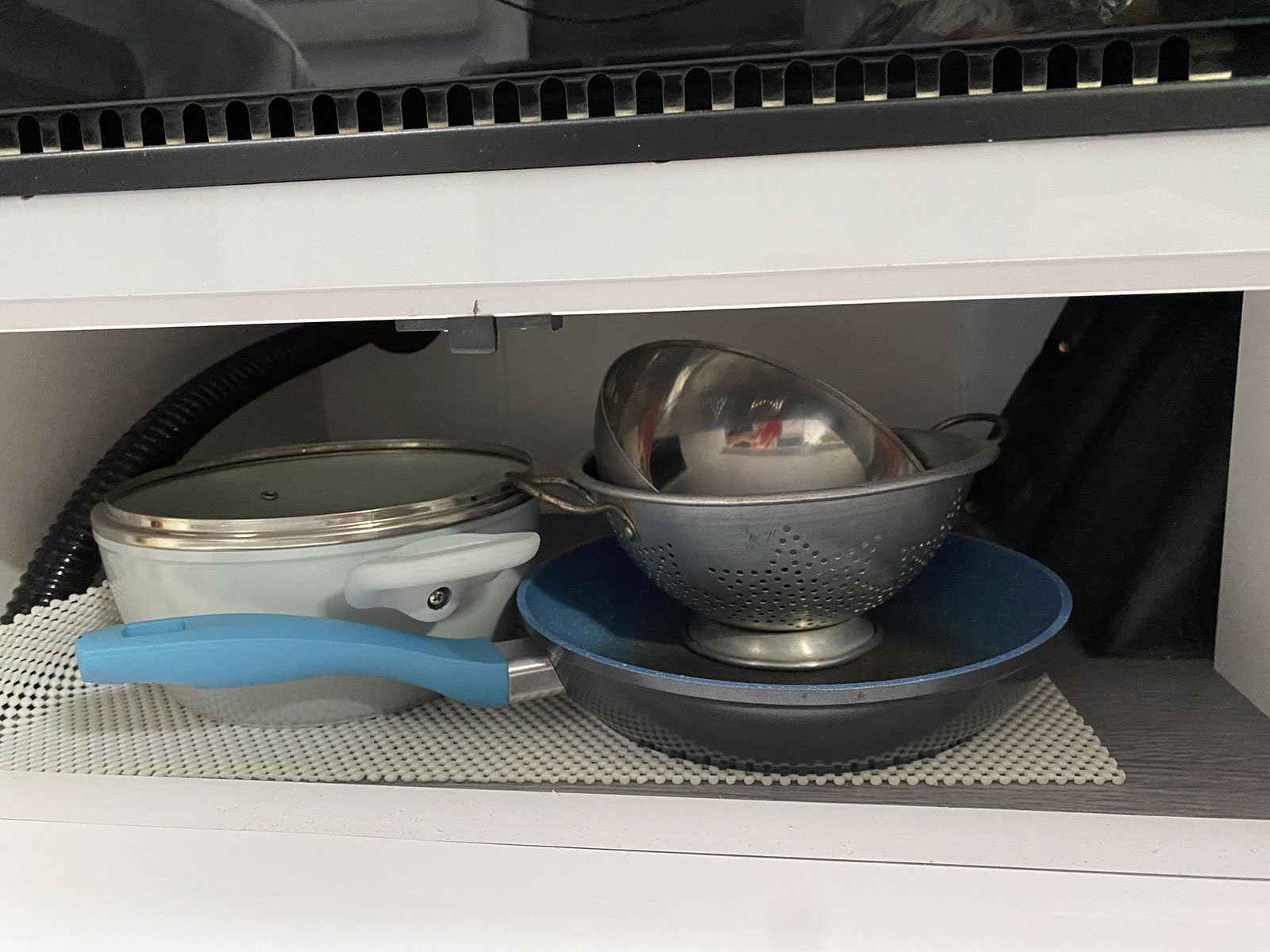
The amount of underbed storage you have to play with can be hit and miss depending on your van, as many can be taken up with the built-in batteries and other accessories. However, be mindful of how much weight you store under the bed, because it can affect weigh balance. And due to the versatility of the underbed storage, it’s always good to check what’s packed away before you head out on your next holiday to make sure you aren’t carrying all your beach gear during the winter months.
STORAGE HACKS
Hanging shoe racks are a surprisingly versatile storage hack. Not just fulfilling their original purpose – keeping your shoes all in one spot and easily accessed – these hanging racks can also hold other supplies, such as cleaning products or toiletries and hang inside a cupboard. Other caravanners swear by suction hooks and shelves to store all the necessary odds and ends, particularly in the bathroom where you don’t want to have to allocate shelf space to your soap, shampoo or toothbrushes.
And don’t be afraid to think outside the box and create storage yourself. Hanging macrame fruit holders and hat holders are making a comeback and have the added bonus of utilising otherwise dead space. Get these online from Amazon or even Etsy if you want to support local creators, or even find a tutorial if you want to take up the craft!
ODDS AND ENDS
Not to be forgotten are the necessary odds and ends that don’t always have a designated place to store within the caravan layout.
One such is the rubbish bin. For space, aesthetic and travel reasons, having the rubbish bin sitting on the floor of the caravan isn’t ideal for many travellers. Similarly, having it sit inside a cupboard shelf is not always practical or secure. Caravanners will have plenty of tips and tricks to share, including small wall-mountable bins that can be attached to the inside of cupboard doors, which can be found at most stores such as Ikea, Howards Storage World and Big W. This bin hack can work perfectly in the cupboard below the sink to utilise what is otherwise often dead space. You could also look into converting a kitchen cupboard to allow for a bin slide, such as one provided by Bunnings’ Kaboodle kitchen range.

Washing liquid and powder can add a surprising amount of weight to your packing, particularly if you’re heading away for a longer period. Laundry detergent sheets are a great alternative to towing these heavy bottles or boxes around, and available in a variety of sized packs meaning you can gauge how many you might need for the length of time you might be away.
When it comes to external storage, plastic tubs with handles can be a lifesaver for keeping leads, cables, hoses and so on organised and easily accessible in the tunnel boot or storage bins. Collapsible buckets and laundry baskets are also great space savers and can be used to store other items when not in use.
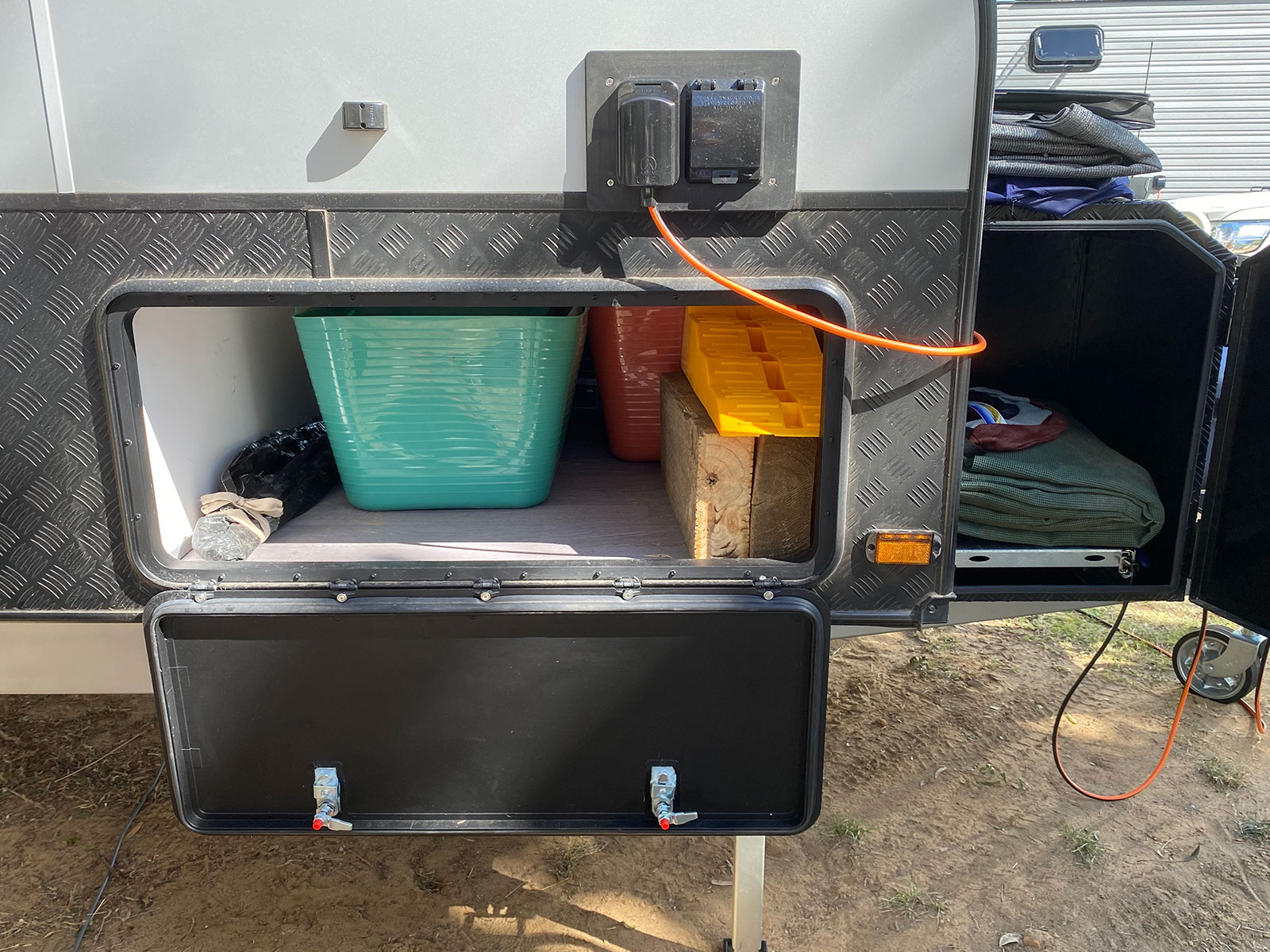
Kitchen appliances such an air fryer, Thermomix and coffee machine can either be a luxury or a necessity you can’t live without. If you’re not sure what side of the fence you’re on, try allocating them space on a trip and take note of how often you use them – if it’s only once, it might be worth saving the weight next time.
FINAL CHECKLIST
There are many things to consider when it comes to your caravan storage and how you utilise it. Weight plays an all-important role, from how much you can legally carry to where it is stored within the van. And because of this, it is always good to start at the beginning and take stock of just what needs to be on board for each trip and store it appropriately given its size, weight and how often you plan to use it.




